CATEGORIES
Kategorier

Sound Generation For Enhanced Road Safety
With an ever-increasing number of fully electric and hybrid vehicles entering the market, we are witnessing a change in the acoustic experience in and around the car. The silent nature of the electric powertrain means that other road users miss the familiar acoustic cues that warn them of an approaching vehicle. To remedy this situation, Harman is working on various noise management solutions.

OBJECTIVE ASSESSMENT OF THE SAFETY CONTRIBUTION OF TODAY'S AUTOMOTIVE HEADLAMPS
Good lighting makes a major contribution to road safety. In 2011, the International Commission on Illumination (CIE) presented an evaluation system for headlamps that can objectively assess the quality of illumination and glare limitation. New light sources like LEDs and lighting functions (glare-free high beam, partial high beam) have been available for several years, so that an extension of the proven CIE method is necessary, which takes into account, among other things, changed switch-on and service lives of new lighting functions and represents a generally understandable evaluation system. An evaluation system presented in the following by the Technische Uni versität Darmstadt, which was developed by an encompassing expert commission, is intended to provide representative data and enable an objective evaluation of headlamp performance.

RAPIDO RE-INNOVATES TO CATER TO POST COVID-19 LAST MILE CONNECTIVITY
The rapid pace of urbanisation in the country has witnessed cities expanding and subsuming surrounding villages and smaller towns, evolving into Tier II and III cities.

FUNCTIONAL SAFETY STANDARDS TOP PRIORITY FOR FUTURE AUTOMOTIVE DEPLOYMENT
Increasing levels of electronic content in vehicles result in a large amount of software that is required to run the scenes behind the mechanical aspects of a vehicle. Electronic systems in automobiles are part of every section, from the powertrain to comfort and convenience systems as well as all types of safety equipment. This makes electronics and the software running these systems a critical part of the equation for future mobility solutions. In addition, putting standards in place to measure methods of developing, testing and functioning of such electronic systems also becomes highly relevant.

“BYD'S EV STRATEGY TO ENCOMPASS MOST FORMS OF TRANSPORTATION NEEDS IN INDIA”
The country’s electric vehicle (EV) ecosystem is grappling with a plethora of challenges even as it is striving to wriggle itself out of the ‘nascent stage’ tag. In an exclusive chat with Auto Tech Review, Zhang Jie Ketsu, Executive Director, BYD India shares his perspective on the current EV scenario and how the company intends to progress faster in the Indian automotive industry

SAFETY IN ELECTRIC AND AUTONOMOUS CARS – SIMULATION OF COMPLEX CRASH SCENARIOS
Electric and autonomous vehicles allow for novel seating arrangements and packaging strategies, presenting new safety challenges. Physical crash testing must be supplemented with virtual simulation to ensure vehicle safety on shorter development cycles. With its Simcenter Madymo MBS software, Siemens provides improved runtimes and the Active Human model, enabling accurate and rapid occupant safety analysis in complex crash scenarios.

KIA SONET – A MIGHTY OFFERING IN THE COMPACT SUV SEGMENT
It wouldn't be wrong to say that Kia Motors India has taken the Indian market by storm in less than 12 months of its presence in the market.

NISSAN'S NEW DIRECTION: ARIYA ALL-ELECTRIC
Marking a key milestone in Nissan’s transformation strategy, Ariya ticks a lot of boxes highlighting the strengths of the global automotive giant.

BETTER SAFETY WITH EMERGENCY BRAKE ASSIST FOR MOTORCYCLES
Rear-end collisions with a slower vehicle suddenly cutting into the lane and intersection accidents with cross-traffic are among the most frequent motorcycle accident types. Continental is now developing an emergency brake assist, which detects an imminent collision with a vehicle ahead or with an obstacle, warns the rider and supports him during braking

ADAS WILL SERVE AS CATALYST FOR IMPROVED VEHICLE SAFETY
The automotive industry across the globe is increasingly focussing on safety.

2020 Honda City – More Refined, Plusher, Well-Equipped
For over two decades, the Honda City has remained one of India’s most favourite sedans.

Realising An All-Electric Future Over The Next Decade
A Greenpeace report early last year reported that a shocking 22 out of the world’s 30 most air-polluted cities are in India.
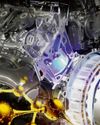
REQUIREMENTS FOR OPERATING MATERIALS APPLIED IN HYBRID POWERTRAINS
The fundamental change in the automotive industry from conventionally-powered vehicles to increasing electrification and fully electric powertrains is a challenge also for the development of operating materials. In this challenging environment, APL contributes with core expertise for internal combustion engines, as well as for hybrid electric vehicles in the areas of electric motors, power electronics and batteries, to support the evolution of alternative fuels and lubricants.

FREUDENBERG ENABLING CLEANER, CONNECTED INNOVATIONS ACROSS AUTO INDUSTRY
The Freudenberg Group is a large conglomerate comprising of numerous companies that it has acquired over the decades. In India, the group has been expanding organically with its innovative products and solutions. This report takes a look at the developments and innovations of the Freudenberg Group companies in India in pre COVID times. Barring SurTec, we spoke to representatives of Freudenberg NOK Sealing Technologies, Freudenberg Filtration Technologies, Klüber Lubrication + OKS and Corteco to provide an overview of Freudenberg’s role in the automotive context in India as well as the new innovations being developed across segments of the industry.
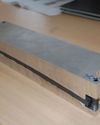
THERMAL MANAGEMENT IMPROVEMENT WITH COMPOSITE MATERIALS IN THE DASHBOARD
Within the framework of the EU project Optemus, the Fraunhofer Institute for Structural Durability and System Reliability (LBF) worked on the topic of “air-conditioning of the driver and passenger interior of the vehicle without high energy consumption.” Fraunhofer LBF developed, produced and analysed a special composite material. This material was used in the dashboard panel of a prototype electric vehicle. Important aspects of the development of the material were the increase of the isotropic thermal conductivity and the suitability for use in the interior.

FOCUSSING ON EMERGING TECHONLOGIES, NEW NORMAL
As part of the Tech Chat series, Auto Tech Review organised two webinars in June – one titled “New and Emerging Technologies in the Automotive Industry” and the other on “Effects of New Normal on Mobility Industry”
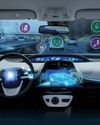
ADAS ROUNDTABLE DELIBERATES ON ROADMAP FOR INDIA
The Mathworks-powered virtual roundtable threw up insights about the challenges and opportunities associated with ADAS
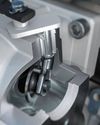
NEW-AGE AUTOMOTIVE MATERIALS TO DRIVE VEHICLE LIGHTWEIGHTING
The automotive industry globally is witnessing an ever-increasing focus on vehicle lightweighting, essentially aimed at improving fuel economy as well as on emission reduction.
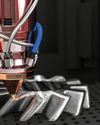
METAL 3D PRINTING DRIVING ENHANCED POSSIBILITIES OF ADDITIVE MANUFACTURING
The adage ‘change is the only constant’ holds true across all segments of life, including manufacturing.

AVAILABILITY OF CRITICAL RAW MATERIALS FOR ELECTRIC VEHICLES
Battery-electric vehicles and fuel-cell vehicles require raw materials that have so far been of little or no relevance to automotive engineering. On behalf of the State Agency for New Mobility Solutions and Automotive e-mobil BW, Sphera investigated the considerably increasing demand and the future availability of critical raw materials & derived recommendations accordingly.

TULA DEVELOPING DYNAMIC SKIP FIRE TECHNOLOGY FOR ALL ENERGY SOURCES
Ever since its introduction to the market in 2019, Silicon Valley-based Tula Technology’s innovative cylinder deactivation technology, Dynamic Skip Fire, has found increasing acceptance in the North American market, with General Motors selling over half a million units featuring this proprietary technology. In its effort to further improve vehicle fuel efficiency and emissions, the company has now collaborated with global power leader Cummins on a significant technical demonstration of diesel Dynamic Skip Fire (dDSF). DSF as a technology, nonetheless, is not limited to petrol and diesel alone.

SECURE OVER-THE-AIR UPDATES FOR CONNECTED VEHICLES
With the advent of the connected vehicle – the “Internet of Vehicles” – the automotive industry is experiencing a real technological leap. As the central component, software is redefining the way manufacturers develop and manufacture their products. It has to be kept up-to-date through downloads, which is a key task. Akamai Technologies describes the challenges arising from software updates and how intelligent analysis methods can be used to investigate anomalies and detect attacks at an early stage.

RCPIT SHIRPUR ADDRESSES EV RANGE ANXIETIES WITH HYBRID TWO-WHEELER
A students’ team HyBike from RC Patil Institute of Technology, Shirpur, Maharashtra has developed a hybrid two-wheeler that blends internal combustion engine and electric motors to develop a greener solution with extended travel range.
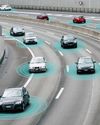
USAGE OF VEHICLE, DRIVER DATA TO IMPROVE USER EXPERIENCE
The road vehicle is becoming more and more a digital platform. It generates torrents of potentially valuable data via a multitude of on-board sensors that process information from GPS to lidar. The challenge for the automotive industry as well as IT service providers like Ness Digital Engineering is how to transform thousands of gigabytes of raw data into useful insights and new business revenue. When it comes to the ways connected passenger cars will transform and improve the customer experience, the players are just beginning to envision the possibilities.

V2X CONNECTIVITY DEMANDS IN THE E/E ARCHITECTURES OF INTELLIGENT VEHICLES
The connection of vehicles with other vehicles and the environment is a strong trend. Connectivity offers many advantages, especially for increasing traffic security. However, differing standards and added costs act to slow down implementation. TE Connectivity describes the aspects, which have to be addressed for faster and easier implementation when integrating V2X into a vehicle.

FIRST LOOK AT THE LAMBORGHINI HURACAN EVO RWD SPYDER
The Huracan EVO is set-up in a rear-wheel drive configuration with an open-top for serious sensory overload. It is not only pantomime scale through the roof but is also laden with considerable technology to perform as good as a coupe.

IMPORTANCE OF DATA IN THE AUTOMOTIVE INDUSTRY
Clichéd as it may sound, data is the new oil and new currency, since the variety of information gained can be utilised in improving various aspects of the automotive sector, and driving mobility experience to new heights.
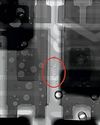
ENHANCED ELECTRICAL RELIABILITY FOR COMPONENTS IN HARSH CONDITIONS
Increased automotive electrification – including 48 V hybrid electric vehicles (HEV) and electric vehicles (EV) with under-the-hood PCBA platforms, such as 48/12 V DC-DC converter PCBA (printed circuit board assembly) and voltage stabiliser PCBA for start-stop modules – has resulted in the prolific usage of high-power components, such as DPAKs (TO-252, decawatt package) or power-QFNs. These components are typically classified as low-standoff, meaning the gap between the PCB pad and the component underbody is typically under 75 μm. During reflow, volatiles in the no-clean paste flux chemistry, such as activators and solvents, boil off. Automotive-grade solder paste is the answer.
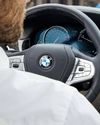
CONNECTING TECHNOLOGIES SHAPING FUTURE OF MOBILITY
Increasing vehicle sophistication has brought connected technologies to the fore, necessitated by various factors such as increasing trends of in-vehicle connectivity, growing consumer demand for luxury & comfort in vehicles, strong focus on intelligent transportation systems as well as an upsurge in tech-savvy population – all focusing on the larger objective of enhancing vehicle performance, safety as well as upping the vehicle comfort quotient.
EFFICIENT CHASSIS APPLICATION WITH INTEGRAL CONTROLLER, VIRTUAL METHODOLOGY
The driving dynamics genes of an Audi are based on a passive base chassis and are essentially defined by the functional software of the active chassis systems. Applying brand-specific driving characteristics to the increasing number of vehicle models and variants forming part of the company’s product strategy entails increasing commitment to chassis tuning. New electric drivetrains are adding to the complexity. The aim at Audi is to manage this additional complexity in the product creation process with reduced resources.